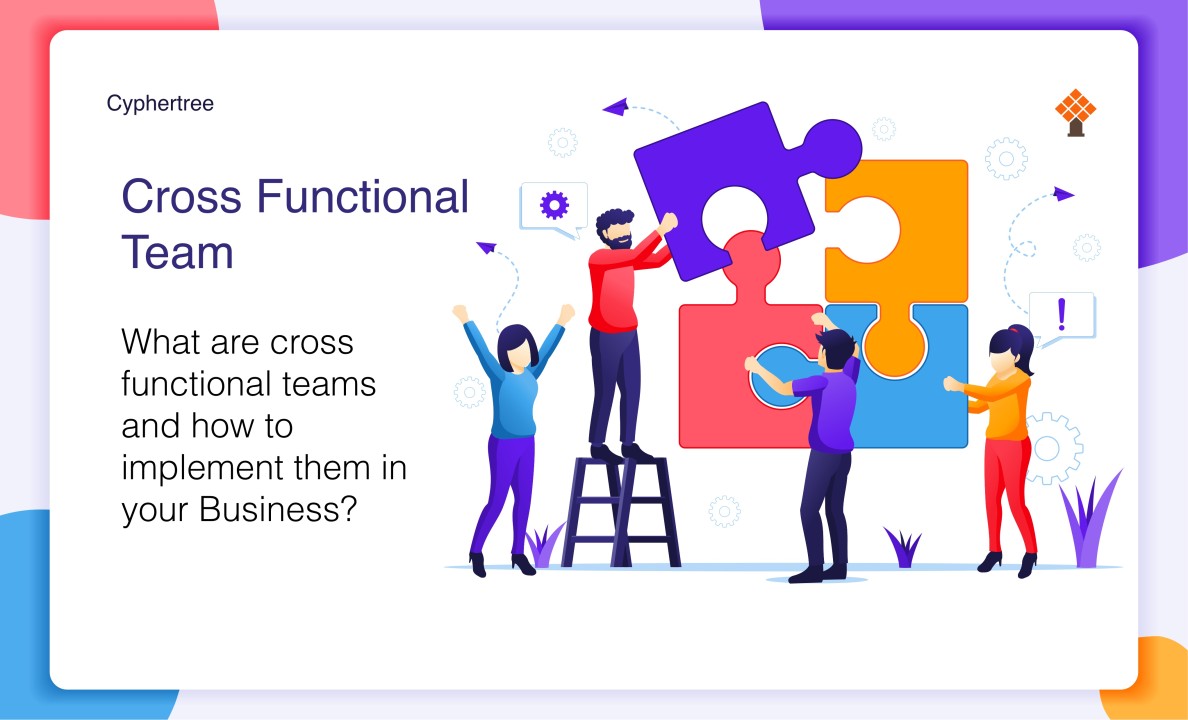
What are cross-functional teams and how to implement them in your Business?
In any organization, there is an integration of different teams to achieve the organization’s goal and realize the full potential of the individual and the team. Whether it is the collaboration between the R&D, marketing, and sales to commercialize a product or creating an in-house interface for better collaboration by IT and communications, there is always an interaction amongst different departments.
A cross-functional team is mainly composed of individuals from different functional areas within a company. This can include human resources, IT, sales, marketing etc. They are a team composed of only a few individuals.
The functionality of cross-functional teams becomes advantageous in an agile environment where they are required to adapt rapidly to changes. Such a team is useful when you require innovation to happen quickly and without bureaucratic hoops.
Although having linear group/departmental teams do have the advantage of implementing projects at a faster rate, many studies have shown that such a team would fail on multiple scenarios because of the ever-evolving nature of modern-day businesses.
Due to the numerous static and dynamic factors, some operational flexibility is required for uninterrupted productivity. Factors like planned budget, being on schedule, or meeting the expectations of their customers and keeping aligned with company strategy to name a few.
Cross-Functional teams with their diverse skill sets and experiences are best equipped to tackle such scenarios
There are multiple ways of implementing such a team and the following things should be considered.
1. Defining core objective
A team without a purpose is a team lost. A clear definition of what needs to be achieved should be defined by Management. The initial budget and timeline must be put forward.
It is best to conduct sufficient research before assembling the team. The management also has to identify the appropriate stakeholders and make sure that there is appropriate representation in the team.
The core objective can then be presented to the team. Their inputs can be accounted for and suitable changes in the relevant parameters can be made. There is a good chance that the objective will contain certain limitations, it is then the job of the team to come up with feasible solutions.
2. Assembling the team
Finding the right people for the job can be a real hassle. While each member is used to interacting with colleagues from their own domain, in a Cross-Functional Team or CFT, they have to interact with people from varying departments. As such, they have to be open-minded and must have good communication ability.
A member should be able to present his own ideas and try to understand what his teammate wants to convey. A study has shown that Northwestern Mutual Life (an insurance firm) used to add an additional member that is not directly a stakeholder. This provides a new perspective to the things at hand.
The feasibility of such an induction needs to be studied further but the intention is sound; creating an environment where coordination and collaboration are paramount.
Assembling the right people for the job can be a big challenge for recruiters especially in the technologically evolving workspaces of today.
The major understanding of recruitment is to connect like-minded parties. The shared thought process and the passion to build and grow a successful business is the secret ingredient of organizational compatibility & team building.
Cyphertree has managed to bridge this gap by using HR Tech to connect recruiters with eligible professionals that not only have the required skill sets but are also suited for the unique cultural environment of the organization.
3. Picking a Leader
A group without someone to direct the events ensues chaos. This can be seen in a political assembly when a bill needs to be passed. Everyone has an opinion and the speaker handles the main point of the session so that valid points are heard.
Similar to that, a leader is someone who should be able to keep the individuals on the path of the goal at hand. Having an authority figure just to guide the meetings and motivate the team members is critical to meet organizational goals.
The members may come from different hierarchies and there will be internal politics. It is the leader’s job to keep track of this friction and try to smoothen the process as much as possible.
4. Dividing goals
Once the main objective is set, individual team members and their responsibilities need to be decided. Further, there might be cases where there could be interdependencies among team members.
For example, one of the team members has to finish his or her part of the project before another team can get started. Knowing the overall workflow and the sequence of steps is essential before the project evolves.
The team is required to schedule specific types of meetings at specific intervals rather than in an ad hoc manner.
5. Evaluating the team
In order for the team to remain effective, it must be measured on the progress and the success achieved. This can be done at the end of the project or in the middle of an active sprint.
Using pre-defined metrics, one can find out if the overall objectives were achieved or not. The team dynamics can be adjusted accordingly.
There is strength in diversity, in having varying opinions amongst the stakeholders so that a holistic plan can be hatched that has accounted for all essential tasks and made provisions for unpredictabilities.
A Cross-Functional Team can help organizations in achieving ambitious goals by adapting to adversities and executing tasks with collaboration and efficiency.
#Leadership #Teamwork #Success #Business #Startup